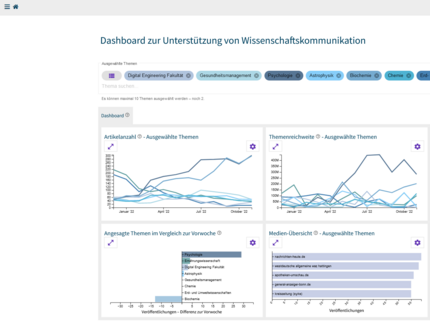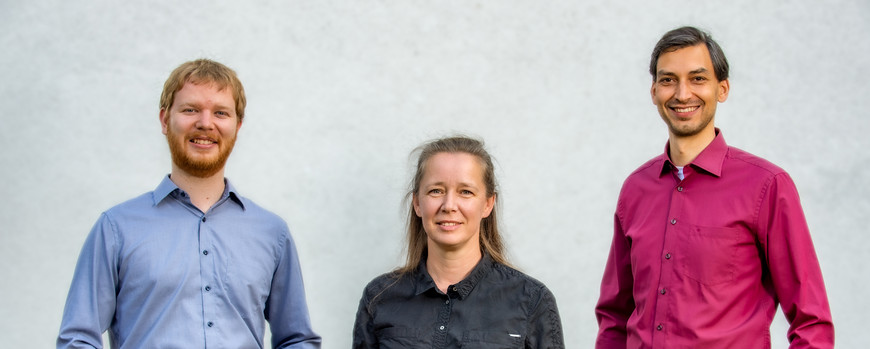Innovative Hochschule Potsdam - ONE.UP
The project Innovative Hochschule Potsdam - Inno-UP - is part of the federal and state initiative "Innovative Hochschule". It applies the goals and measures of the University of Potsdam's transfer strategy strategically, structurally and operationally to the Potsdam-Golm university campus. The transfer of knowledge and technology from teaching and research to the regional society and economy is to be promoted sustainably. In order to achieve this, the three thematic focuses Technology Campus, Education Campus and Society Campus will be established on the University Campus Potsdam-Golm.
The subproject ONE.UP, which is primarily located at the Chair for Complex Multimedia Application Architectures, focuses on the analysis of transfer-related data and therefor is a transversal topic at Innovative Hochschule Potsdam. The results of the analyses will be visualized in a personalized dashboard and thus offer transfer-active persons the possibility to make decisions based on evaluated data.
Many scientists learn skills to communicate within their scientific community, but thereby unlearn the language and platforms to reach audiences outside their community. If scientists are willing to open their communication spheres, then finding a medium and the appropriate language should be, at best, as little effort as possible. Our approach is to scan the media landscape for the chosen research topics and prepare them for researchers in a way that they know which of their research topics are currently being discussed by society. With this knowledge, researchers can find media with specific thematic focuses and use this for targeted and appropriate science communication. The underlying assumption is that scientists might get an easier entry point for the communication about their research process or results when they know about the pervasion of their research interests in society.
We have developed an infrastructure to aggregate data, compute insights and visualize the findings in a dashboard. To aggregate data, we have systematically collected newspaper articles focussing on university activities. For this prototype, it is the only data source but the flexible architecture is open to gathering multiple sources of texts as well. To compute insights we deploy a toolchain of different established algorithms from the Natural Language Processing field. The challenge is, on the one hand, to automatically extract meaningful topic labels from the texts and, on the other hand, to connect these labels with research topics. Once the research topics have been linked to the articles, they can be quantified in terms of reach or number of articles. For visualization purposes, there are various diagrams to see which topics are currently being discussed frequently and thus get an idea of the media interest. One weakness is that the visualization gives no indication of the sentiment or tone in the reporting on the chosen topic, but it does allow the researcher to read the articles in the media most engaged with the topic to form his or her own picture of the audience's language and prior knowledge.
The Team

Prof. Dr.-Ing. habil. Ulrike Lucke
Lehrstuhlinhaberin

Jan Bernoth, M.Sc
Wissenschaftlicher Mitarbeiter
Teamleitung Infrastrukturen



